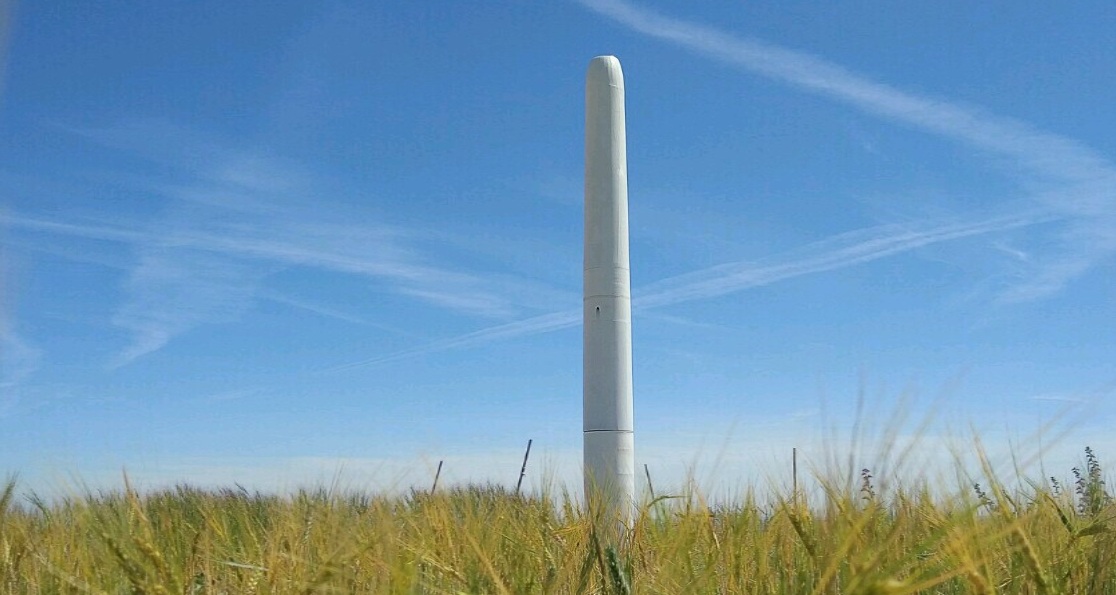
All about wind turbines
All about wind turbines
The key to wind energy
The key to wind energy
Wind turbines play an essential role in wind power generation. From their beginnings as windmills designed to extract water to their present-day use, these devices are at the forefront of sustainable energy production.
What is a wind turbine?
What is a wind turbine?
The role of wind turbines is crucial in moving towards cleaner and more efficient energy systems.
A wind turbine, also known as a wind generator, is a device that uses the power of the wind to generate electricity. When several wind turbines are grouped together in the same place, a wind farm is formed.
A wind turbine consists of various parts:
- Rotor: harvests the wind's energy usually with 3 blades connected to a shaft. When the wind blows, the rotor rotates, harnessing the kinetic energy from the wind. The Nacelle or Gondola, a structure located at the top of the wind turbine, houses the electronic and mechanical system necessary for transforming wind energy into electricity.
- Generator: connected to the rotor, it converts the mechanical energy of rotational motion into electricity. This process is based on electromagnetic principles, using magnets and coils to generate an electric current.
- Tower: the structure that supports the rotor and generator at the top. The height of the tower is crucial, since at greater heights there are usually stronger and more constant winds.
- Control and directional system: the wind turbine is usually equipped with control systems that adjust the direction of the rotor to maximize wind harvesting and ensure efficient performance. These systems ensure that the wind turbine is always optimally aligned with the direction of the wind.
How does a wind turbine work?
How does a wind turbine work?
The operation of a wind turbine can be divided into several stages, from harvesting wind energy to power generation. These stages are:
- Harvesting wind energy
It starts when the wind hits the rotor blades of the wind turbine. These aerodynamically designed blades seek to maximize the harvesting of kinetic energy from the wind. It is important to note that wind turbines are designed to operate within a specific range of wind speeds. - Turning of the rotor
The wind causes the rotor blades to spin around their axis. This rotary motion is transmitted to the generator via a connected shaft. - Power generation
The generator is the key component that transforms the mechanical energy of rotary motion into electricity. Generally, wind turbines employ either synchronous or asynchronous generators. In a synchronous generator, the rotational speed of the rotor and the frequency of the current generated are synchronized. In contrast, in an asynchronous generator, these variables are not rigidly synchronized, which offers greater flexibility in its operation. - Control and direction
The wind turbine has a control system that adjusts the direction of the rotor to maximize efficiency. Sensors constantly monitor wind speed and direction, and the control system adapts the direction of the rotor to optimize energy capture. - Electricity transformation and distribution
The electricity generated by the wind turbine, which is usually alternating current (AC), undergoes a transformation process. A transformer raises the voltage to adapt it to the levels required by the power grid. The electricity is then transferred by cables from the wind turbine to a transformer station. At this point, it is integrated into the power grid for distribution.
Types of wind turbines
Types of wind turbines
The diversity of available wind turbines makes it possible to make the choice depending on different needs. Aspects such as wind speed at the location, the purpose of the installation, and economic considerations are decisive in selecting the most suitable type of wind turbine.
Furthermore, wind power generator technology continues to evolve, leading to improvements in efficiency, performance, and adaptability to different environments.
Some examples of wind turbines include:
Repsol's commitment to wind energy not only positions it as an essential pillar in the energy transition, but also emphasizes its dedication to diversification and innovation in the sector, creating home solutions for the present and the future.
This strategic vision supports our position as a leader in wind power generation with the acquisition of ConnectGen. This company, with a project portfolio reaching 20,000 MW, is an addition to our operating wind farms in Spain and Chile. Moreover, the integration of 2,800 MW through the acquisition of Asterion Energies in Spain and Italy further reinforces our commitment to the successful growth of the renewable energy market in the United States, one of the largest and most promising markets for growth.
In line with this strategy, we would also like to underscore our participation in projects such as offshore wind energy and the innovative bladeless wind turbine technology, a project developed by the startup, Vortex Bladeless, which emerged from our Entrepreneurs Fund.
Our commitment highlights a proactive role in building a more sustainable and resilient future for energy.
You may be interested in
You may be interested in
.jpg.transform/rp-rendition-sm/image.jpg)
Self-consumption
Discover how self-consumption allows any person or company to produce and consume their own electricity by installing solar panels in their home or premises.

Aerothermal energy
Aerothermal energy is one of the most sustainable and profitable solutions for cooling and heating homes and buildings. We at Repsol tell you how it works.

Solar power plants
A solar power plant enables the transformation of solar radiation into electricity to be supplied to homes and industries. We tell you about its types and how they work.




